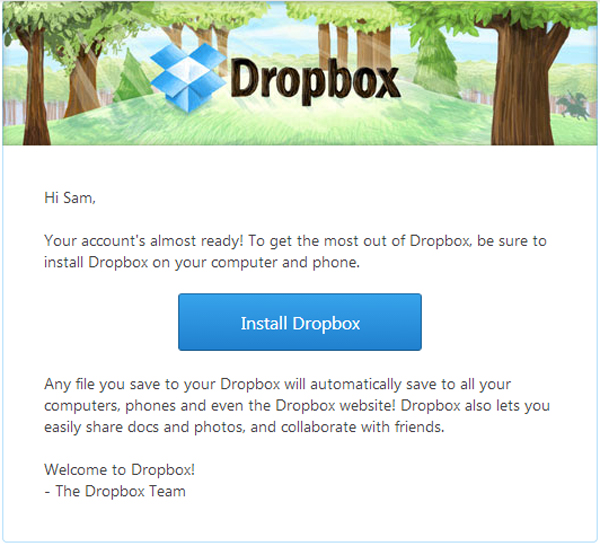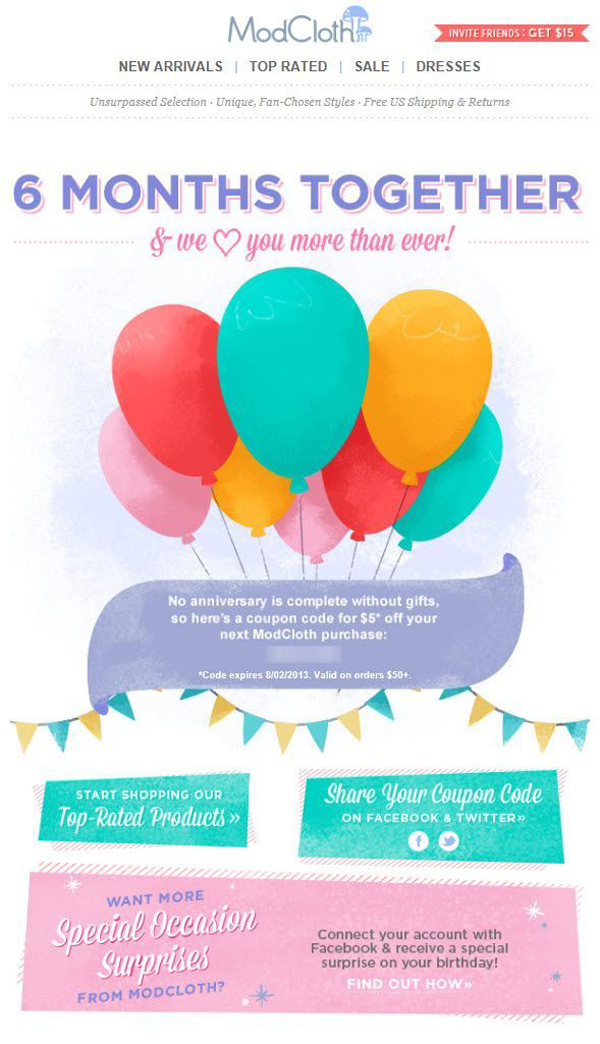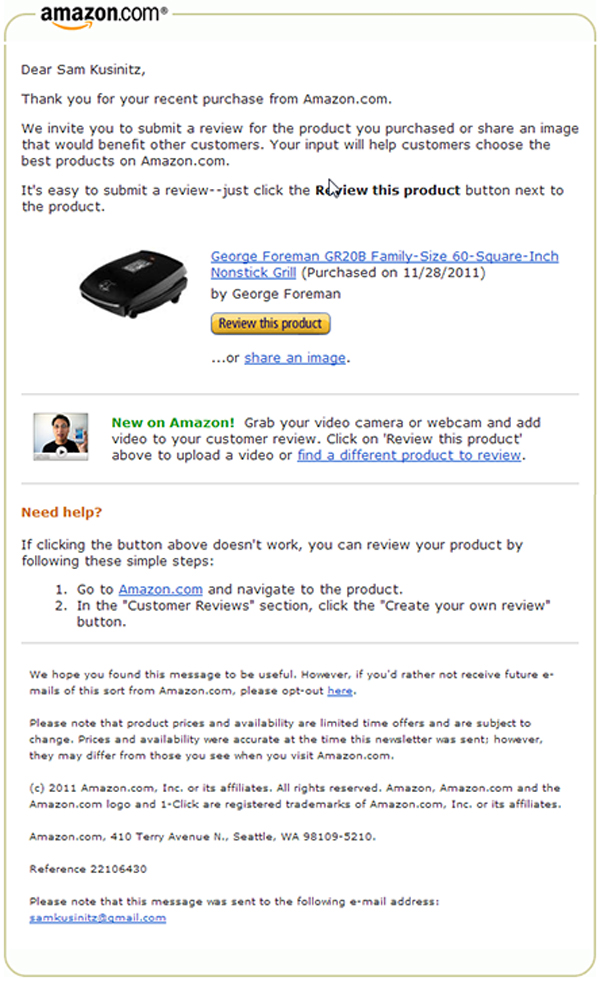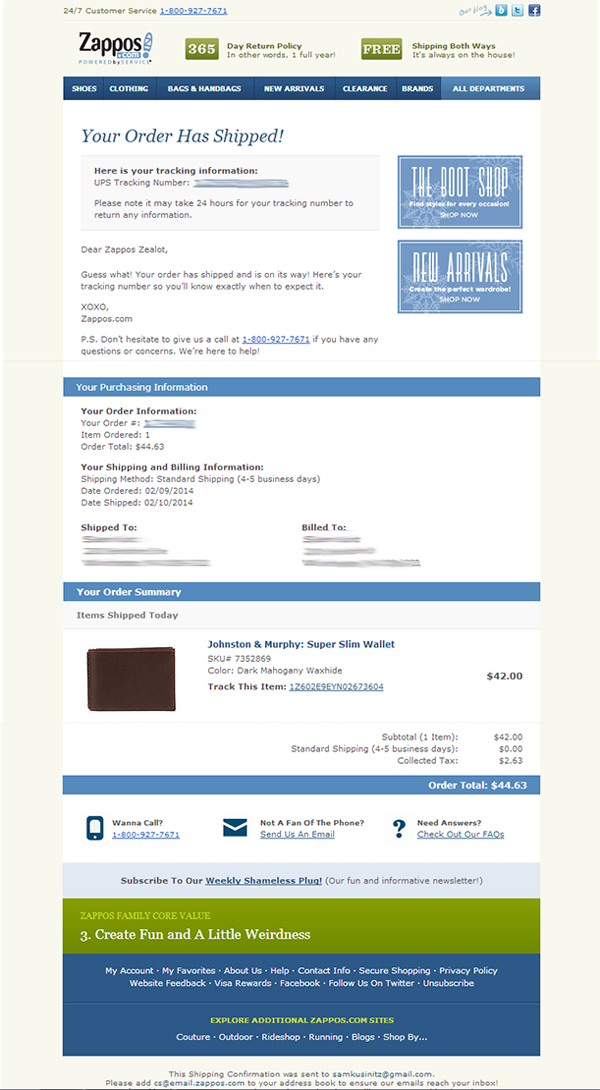100 Lessons Learned from 10 Years of Blogging
by on December 17, 2014

I can’t believe that I’ve been blogging for over 10 years now. Boy, has it been a fun journey!
Overall, I love blogging because I enjoy helping others. In addition to that, it’s helped generate a lot of traffic and revenue for my companies. It’s actually our main marketing channel for each of my software companies.
But if I had to start my blogging journey all over again, I would have done things differently. Why? Because I’ve learned a lot over the years.
Sadly, I don’t have a time machine, so I can’t go back in time and avoid the major mistakes I’ve made… but I can share my lessons with you so you can learn from them. Here are 100 lessons learned from blogging for 10 years…
Headlines
Here are some lessons learned from creating over 1,000 headlines:- Headlines with facts and data tend to get shared well within the B2B community.
- Keep them short and sweet, or else your click-through rate will decrease.
- The headline is the most important part of a blog post.
- If your headlines are too long, they will get cut off within Google’s search results. Try to keep them to fewer than 65 characters.
- Don’t assume you know what your readers want. Make sure you A/B test your blogging headlines.
- Try to think what people would search for to find your blog post on Google. If possible, incorporate those words and phrases within your headlines.
- Using negative words within headlines is a great way to increase your click-through rates.
- If you use numbers within your headlines, use odd numbers — they tend to get more clicks.
- People scan headlines and tend to look only at the first 3 and last 3 words within the headline.
- Try to address the readers within the headline.
- Make sure your headline is clear. If people don’t know what they are reading, they will bounce off.
- If you aren’t sure how to write great headlines, start by using these formulas.
- Don’t try to click-bait your readers. If you deceive them, you will lose their trust.
- Evoke curiosity when possible. This also tends to help with Facebook shares.
- Leveraging emotions within headlines is a great way to get more people to read your blog post.
- Use magazines for inspiration. Their writers tend to know how to write popular headlines.
- When you’re stuck, you can always use a headline generator. It’s not the be-all and end-all tool, but it will help you get started.
- Make sure your headline is short enough to fit within a tweet.
Writing
Here are some writing lessons I’ve learned:- Be sure to check all posts for grammar and spelling errors. This affects your readers and your search engine rankings.
- Try to start off your introduction with a question. It’s a quick way to hook your readers.
- Use the words “you” and “I” within your post as it will help create a conversation.
- Wrap up your post with a conclusion. It’s a great way to summarize your message and provide key takeaways.
- Use subheadings within your body. They make your posts easier to read.
- Stylize your posts by bolding and italicizing words and phrases.
- Using bullets and numbers is a simple way to make your content more digestible.
- Always outline before you start writing. It helps speed up the process.
- Telling a story is a great way to make your content stand out from the crowd.
- Opening up to your readers is a great way to build an emotional connection with them. You can easily do this with your words.
- Only write about things you are passionate about. Those are the posts that will do well. Your readers can tell when you blog on stuff you love.
- Experiment with different writing styles. It’s the best way for you to figure out your voice.
- The best time to write is when an idea hits you. If you can drop everything and focus on writing, you’ll be able to blog efficiently.
- Don’t rush your writing. Creating high quality content takes time and practice.
- Don’t publish everything you write. Some of your posts will suck, and you shouldn’t release them. It’s okay… it happens to all of us.
- Make sure you get to the point as quickly as possible. Fluff doesn’t help.
- If you are struggling with writing, you can always hire an editor to help you out.
Idea generation
Here is what I learned about coming up with blog topic ideas:- Your best ideas typically aren’t generated from sitting in front of a computer. Experience the world, interact with others, and let your creative juices flow.
- Use tools like Buzzsumo to come up with ideas. What’s worked before still works now in most cases.
- Follow your competition. Knowing what works for them will help you come up with topic ideas.
- Use Google Analytics to analyze your posts. Stop writing about topics that receive very little traffic.
- Pick up a magazine or a book to spur ideas.
- Don’t force ideas — let them come to you naturally. Forced ideas tend to turn into crappy blog posts.
- If you are stuck, ask others for help. From peers to people within your industry, others can give you ideas.
- You can use tools like Qualaroo to generate ideas from your website visitors.
- Start subscribing to the popular forums within your community. The most asked questions tend to be great blog post ideas.
- Google Trends is a great place to find up-and-coming topics to blog about.
Commenting
Here is what I learned about commenting:- Always ask your readers a question at the end of your post. It helps increase the number of comments you receive.
- Remove trackbacks from your blog. They just get in the way of people seeing and reading the comments.
- Make sure you use threaded comments to help with responses.
- Don’t use Facebook comments. The text within them isn’t crawlable, which hurts overall rankings.
- Don’t expect people to comment if you aren’t willing to respond to each commenter.
- When responding to comments, make sure you give thorough responses. It shows that you care.
- Try to respond to comments right when they come in. Your prompt replies help increase responses.
- Use email notifications to let previous commenters know when new comments have been left. You can use the Subscribe to Comments plugin for this.
- Moderate your comments. You don’t want a lot of spammy comments, or they will kill the vibe.
- Encourage people to use their names instead of their website names when leaving a comment. Commenting should be a personal thing.
- Avoid self-promotion. Your goal should be to help readers and not convince them to pay you for anything. In the long run, this will help build goodwill and increase sales.
- Personal stories and experiences tend to receive the highest number of comments.
- People tend to prefer commenting at 9 a.m. versus other times.
Email marketing
Here is what I learned about email marketing:- Email marketing is the number one way to get people back to your blog.
- Readers who come to your blog from email are more likely to share your content on the social web and to comment.
- Pop-ups on the entry and exit are the best places to collect emails.
- Even though you may hate pop-ups, very few of your visitors will complain about them.
- Sidebar opt-ins and opt-ins beneath blog posts (above the comments) are also effective areas to collect emails.
- The best way to collect email addresses is to offer each reader an incentive such as a free e-book.
- When testing the call-to-action button for your e-book offer, start with the “get instant access” call to action as it tends to convert well.
- Every time you publish a blog post, send out an email to all your subscribers, letting them know you published a post. Make sure you limit the email frequency to two or three times a week.
- When emailing your readers, limit the number of links in your emails. Using more than three tends to cause more emails to go into the spam folder.
- Don’t keep emailing those readers who don’t open your emails. It causes spam issues. Your email provider should help you filter out these emails.
- If your email offer is related to a specific blog post, your opt-in rate will go up.
- Make sure your offer is very valuable, or else it will ruin your reputation and cause a lot of unsubscribes.
- Don’t sign up with an email provider that puts you on a shared IP. If you manage your list right, a dedicated IP will help with deliverability.
- Getting Return Path certified will help you get more emails into people’s inboxes.
- Keep your email subject lines short — it will help with open rates.
- When possible, keep your subject lines casual as it also helps with open rates.
- Do not put your whole blog post within the email. Make sure you put only the first paragraph or two to help drive more traffic back to your site.
Scheduling blog posts
Here is what I learned about blog post timing and frequency:- Publish blog posts on a consistent basis, or it will be hard to grow your traffic.
- Come up with a regular posting schedule, and stick with it. Whether it is once a week or once a month… stick with the schedule.
- Mondays, Tuesdays, Wednesdays, and Thursdays tend to be the best days to blog.
- You’ll get the least amount of traffic on Friday, Saturday, and Sunday.
- Most people read blogs in the morning. Afternoon is the second popular time.
- The best time to schedule a blog post is on Monday at 11 a.m.
- People who blog twice a day generate more than twice as many inbound links as people who blog once a day.
- Women are less likely to read blogs posts during the evening than men.
SEO
Here is what I learned about optimizing your blog for search engines:- If you are using a WordPress blog, use the Yoast SEO plugin.
- Interlink your blog posts when it makes sense as this will help with crawling and indexing.
- Avoid writing content for search engines. Write content for humans as eventually search algorithms will adapt.
- Posts that are 2,000 words or longer are more likely to rank on page one of Google.
- Creating infographics is a great way to gain new readers and backlinks. In the long run, these backlinks will help boost your rankings.
- Avoid keyword stuffing in your blog posts — it will just hurt you.
- Blogging is a long tail strategy, so don’t focus on optimizing your blog posts for any particular keyword. Just focus on writing high quality content.
- Having subheadings and headings within your blog posts will help you rank for more keywords.
Social media
Here is what I learned about social media marketing:- Make sure you use scrolling social buttons like Flare as it will help generate more social shares.
- Only place two or three social sharing options on each blog post. Fewer options will help you generate more social shares than five or six will.
- Place social sharing buttons at the bottom of your post as well as on the side.
- Most people are on Twitter during 5 p.m. EST. That is when you should share your content.
- Share the same post on Twitter multiple times in order to get maximum visibility.
- People prefer sharing content on Facebook at 12 p.m. EST during Saturday.
- Asking people to share content at the end of each blog post is a great way to get more social shares.
- If you want more social traffic, make sure you are using social meta tags.
- If you have co-workers, ask them to share your posts. Every share helps.
Conclusion
I’ve learned a lot about blogging over the last 10 years. I’ve enjoyed my journey, and I will continue to learn more as I blog over the next 10 years.I hope you can gain some insights from my experiences and grow your blog at a much quicker pace than I have been able to do.
Is there anything you have learned during your blogging journey that you would like to share?
 July 10, 2014 at 6:00 AM
July 10, 2014 at 6:00 AM
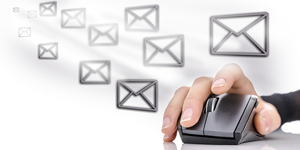 Triggered
emails can be a great way to deliver the right content at the right
time to the right people. A sincere thank you, a courteous confirmation,
or a concerned abandoned cart message that automatically follows a
specific behavior someone took on your website can be the difference between a very happy customer and losing a contact altogether.
Triggered
emails can be a great way to deliver the right content at the right
time to the right people. A sincere thank you, a courteous confirmation,
or a concerned abandoned cart message that automatically follows a
specific behavior someone took on your website can be the difference between a very happy customer and losing a contact altogether.
